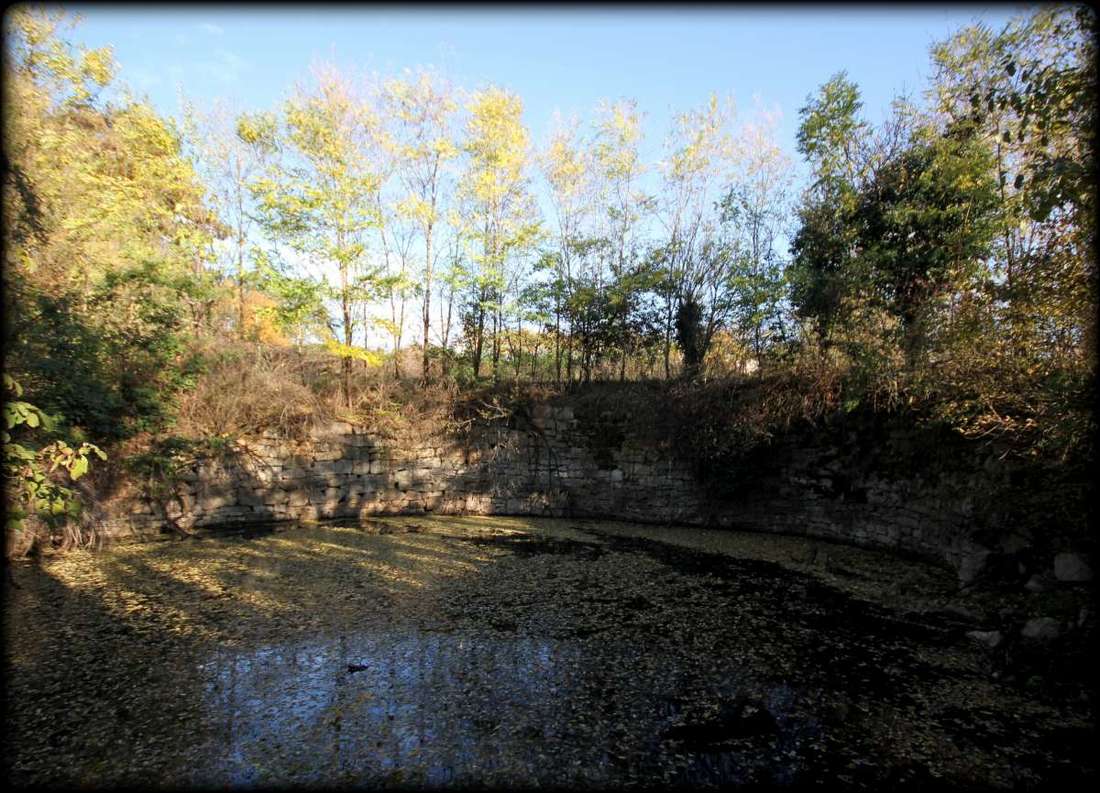
Velika lokovca or Tugovnik
If you head over the grassy cart track that is visible behind the St. Roch shrine, you will reach Velika lokovca (the Big Karst Pond). The track will take you along the edges of vineyards and branch to the right at the forest. Velika lokovca is surrounded by stone blocks and is only a few steps away.
|
In 1851, the village decided to move the cemetery to its today’s location due to overcrowding. In the same year, the Velika lokovca was created because the soil for the new cemetery was dug here and shipped to the cemetery with wagons, which was the duty of each farm.
The road that led to Dutovlje from the north ran through Bitnja and presented a serious challenge for wagons because of its slope. This is why the villagers decided to build a new road that runs toward the village square with a gentler climb. When the big bend under the village was built (called “Ključ” (the Key) by the locals), the Lozar garden was arranged, which then became the most beautiful garden in the village. The soil for the Lozar garden was also dug in Velika lokovca, causing it to grow even larger in 1890. After that, digging in Velika lokovca was forbidden. The pond was used as a water reservoir, mostly during World War I. |
Sources:
Albin Kjuder: Historical Mosaic of the Primorska Region, 1972
Oral testimony: Marta Ščuka
Photograph:
Miloš Stankovič
Albin Kjuder: Historical Mosaic of the Primorska Region, 1972
Oral testimony: Marta Ščuka
Photograph:
Miloš Stankovič
